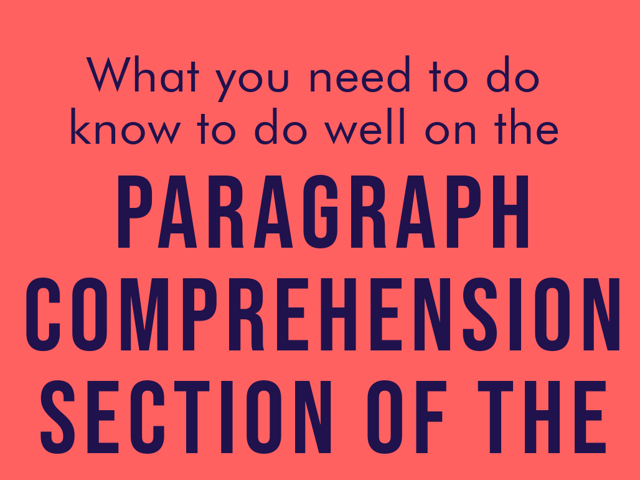
What You Need to Know to do Well on the Paragraph Comprehension Section of the ASVAB
What is it?
The ASVAB Paragraph Comprehension (PC) test is part of the suite of tests that makes up the ASVAB. It is designed to be an assessment of your ability to read a passage and understand what you have read. It tests your ability to obtain and assess specific information that may or may not be stated outright within the reading. The ASVAB test can be administered in one of two ways: on the computer (CAT-ASVAB) or with good old-fashioned paper and pencil. If you take the test via computer, you must answer 11 questions in 22 minutes in the PC section. If you opt for pencil and paper, you must answer 15 questions in 13 minutes. Keep an eye on the clock regardless of which test method you use.
What does it assess?
The PC portion assesses your abilities in the following skills using short reading passages:
- identifying the main idea of a passage
- identifying supporting details
- identifying stated facts and those that may be inferred or reworded in the text or answer options
- determining the sequence of events
- drawing conclusions
- determining author’s purpose and tone
- identifying author’s style and technique
- summarizing
How do I approach this beast?
Relax
Although a timed test involving reading and comprehension might sound scary, this is the first thing you should do. Yes, yes, easier said than done. But by the time you walk in to take your scheduled test, you should have completed some practice tests online to determine which skills needed some extra attention before test day. You practiced those skills, retook those practice tests, and are confident about the material you are about to be tested on. So take a deep breath, and dive on in!
Read carefully
When you are ready to begin the test, this is our next piece of advice. This handy tip applies to all reading you may encounter on the test, whether it’s the directions, the passages, the questions, or the answer options. Read it all. Some test prep sites suggest that you read the questions first, so that you know what to look for as you read the passage (are you looking for a detail or to identify the main idea or is it asking about a particular word, etc.). Other sites suggest you read the questions and the answers first, so that you can work to eliminate incorrect answers immediately, thereby narrowing down what you look for as you read. You know how you test best. In your practice, hopefully, you have found the approach that works for you and you should apply it now. Regardless of the order in which you read the passages and the questions/answers, make sure that you read them carefully. Make sure that you understand what you are being asked to do in each question so that you can do it. Watch out for trick words in the questions, like not, except, most likely, etc. They can totally change the goal of your search for the correct answer. Don’t forget to read the directions. There is often valuable information to be learned there—thus the reason directions are included.
Don’t fall into test traps
This goes right along with reading carefully. The test makers intentionally include misleading answers as a test of your skills. Don’t get tripped up by trick questions that have misleading answer options. Any answer options that include absolutes (all, never, everyone, no one, etc.) or are ambiguous (seldom, sometimes, occasionally, etc.) should be approached cautiously as they may be a trap. These types of answer options are seldom correct. Make educated guesses if you aren’t sure of the answer, but if you are looking to eliminate wrong answers, getting rid of absolutes or almost trues will help narrow down your choices.
Applying these tips should transform this testing experience from “daunting” to “doable”— and it gives you a chance to show what you can really do in terms of reading and understanding written text.

Keep Reading

Armed Services Vocational Aptitude Battery Blog
What is the ASVAB Test?
The Armed Services Vocational Aptitude Battery, known as the ASVAB, is …

Armed Services Vocational Aptitude Battery Blog
Military MOS Codes
Military Occupational Specialty (MOS) codes are an integral part of the…

Armed Services Vocational Aptitude Battery Blog
U.S. Army Height and Weight Standards for Females
The U.S. Army’s commitment to maintaining a robust, physically fit, and…